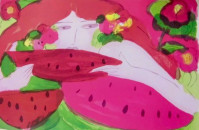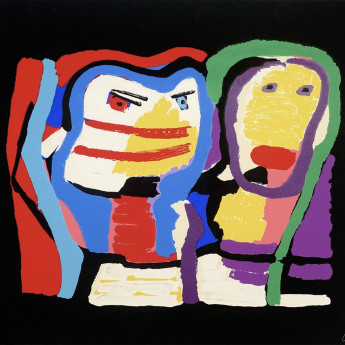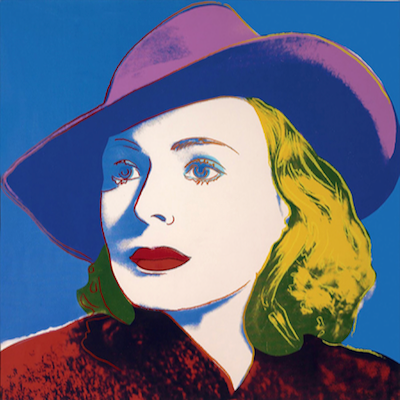
Details
Artist
Styles
Printed plate: 89.5cm x 59cm // Blue Horse by Walasse Ting is a vibrant screen-print from 1991, featuring Ting's characteristic use of vivid colors and expressive figures. The central figure is a majestic blue horse, its bold, solid form dominating the composition. To the left, two women in colorful attire hold fruit, presenting it to the horse in a gesture that feels both tender and symbolic. The bright palette of blues, greens, purples, and pinks, along with the fluid, painterly strokes, imbue the scene with a dreamlike quality. Ting’s work often celebrates life and nature, and Blue Horse reflects his affinity for animals and his playful, poetic approach to form and color.
Blue horse, 1991
form
Medium
Size
109 x 97 cm
- Inches
- Centimeters
Edition
Price
Details
Artist
Styles
Printed plate: 89.5cm x 59cm // Blue Horse by Walasse Ting is a vibrant screen-print from 1991, featuring Ting's characteristic use of vivid colors and expressive figures. The central figure is a majestic blue horse, its bold, solid form dominating the composition. To the left, two women in colorful attire hold fruit, presenting it to the horse in a gesture that feels both tender and symbolic. The bright palette of blues, greens, purples, and pinks, along with the fluid, painterly strokes, imbue the scene with a dreamlike quality. Ting’s work often celebrates life and nature, and Blue Horse reflects his affinity for animals and his playful, poetic approach to form and color.
- Recently Added
- Price (low-high )
- Price (high-low )
- Year (low-high )
- Year (high-low )
What is pop-art?
Pop Art is an art movement that began in Britain in 1955 and in the late 1950s in the U.S. It challenged traditional fine arts by incorporating imagery from popular culture, such as news, advertising, and comic books. Pop Art often isolates and recontextualizes materials, combining them with unrelated elements. The movement is more about the attitudes and ideas that inspired it than the specific art itself. Pop Art is seen as a reaction against the dominant ideas of Abstract Expressionism, bringing everyday consumer culture into the realm of fine art.


















